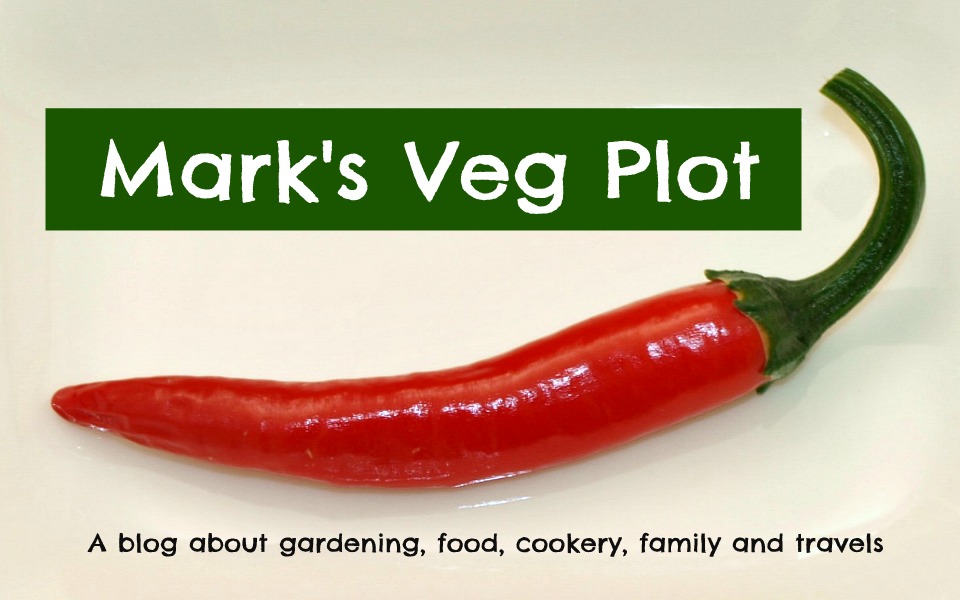I don't claim to be an expert on Blueberries, but I just want to write a few words about what I have learned about them...
The first thing is: Blueberries love acid soil and will not thrive if they don't get it. Not all suppliers will tell you this, in order to avoid putting you off buying their product because it may be perceived as difficult to grow. The solution is to grow them in containers, where you can more easily control their growing-medium:
As you can see, I have four Blueberry plants, and they are all in containers filled with Ericaceous compost, the type specially formulated for lime-hating plants like Blueberries.
My Blueberries are all ones obtained as Freebies in magazines, so I don't know their names. One of them produces pink berries. It is the one seen at the left in my photos. It's interesting to see that unlike the other three it hasn't dropped its leaves over the Winter. I expect that once Spring begins, those leaves will fall off and be replaced with new ones.
Blueberry plants produce most of their fruit on growth from the previous year, often in the form of a number of twiggy shoots at the end of a bigger branch, which is a point to bear in mind when pruning.
 |
| New shoots (red) emanating from an old branch (brown) |
When I first started growing Blueberries I used to prune them quite severely each year, in an attempt to keep them compact, but the yields were disappointing. I have since learned that it's best not to cut too much off, even if this means letting the plants get very tall. When you get your young (Freebie?) Blueberry plant as a little tiny stick in a 1-litre pot you may not immediately realize that it will soon grow to 5 feet tall or more! This year I have just trimmed a bit off the tallest stems to make it easier to net them. I think the best approach to pruning is probably to remove some of the oldest stems
in their entirety, when they get very woody. This promotes the formation of fresh growth from the base of the plant, rather than at the top.
By the way, I have learned through experience that Blueberries are very attractive to birds - particularly Blackbirds. And Blackbirds are both voracious and cunning. If you do not securely net your Blueberries, you will most likely lose all their fruit! In the past I have constructed various forms of temporary fruit-cage to protect my plants, reasoning that they are only vulnerable while the fruit is ripe or nearly so, but to be honest, a more permanent structure would be highly desirable. The Blackbirds will often steal the fruit well before a human would consider it edible, so "Better Safe Than Sorry" is the best policy.
You may have noticed that a couple of the Blueberry pots have got a lot of moss in them (why not all four, I ask...?)
Now, I'm not sure how much of a problem this is, but I'm planning to remove the moss soon anyway. My reasoning is that it probably uses up water and nutrients that should more properly be available to the Blueberries themselves, and may perhaps cause the compost to be more airless than would otherwise be the case.
Talking of water, Blueberries are supposedly best watered copiously (they are originally a bog plant, I think), and preferably with rain water. The water that comes out of our taps is full of chemicals that may adversely affect the pH of the compost. I have to say though that I know of several people who have disregarded this advice and yet have produced fine crops of Blueberries...
And if you do all the right things (or if you're lucky), this is what you get:
I'm not going to kid you that I have had massive crops from just 4 plants, but the yield has certainly been worthwhile. I would say off the top of my head that about 500g per plant would be a good result. Frustratingly, Blueberries ripen successively, not all at once, so you have to pick the berries on several occasions. I tend to pick all those that are mainly blue, even if it's obvious they are not 100% ripe, and then ripen them indoors. This is not only more convenient, but it also reduces the risk of losing them to the birds.
One final thought: Just like Strawberries, some Blueberry plants produce their fruit early in the year (June, maybe), and others later - say September or October - so it's possible to have ripe berries available for quite a long period of time. If you are buying new plants, it's worth researching this.




